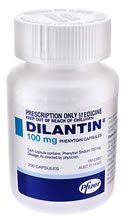Top Class Actions’s website and social media posts use affiliate links. If you make a purchase using such links, we may receive a commission, but it will not result in any additional charges to you. Please review our Affiliate Link Disclosure for more information.

The U.S. Food and Drug Administration (FDA) approved Dilantin for the management of grand mal seizures and temporal lobe seizures in November 2001. In 2008, however, the FDA began investigating Dilantin’s role in causing serious skin reactions such as Steven Johnson Syndrome (SJS) and Toxic Epidermal Necrolysis (TEN). That same year, Pfizer added warnings about the increased risks of Dilantin SJS and TEN to its product labeling. This drug warning came too late for millions of patients who had already put themselves at risk by taking the medication.
Although Dilantin remains on the market, to date the medication has been named in numerous Dilantin lawsuits. There is evidence that Pfizer was already aware of Dilantin’s association with SJS and TEN before the FDA investigation, but did not share this information with consumers or prescribing physicians.
What Are Stevens Johnson Syndrome and Toxic Epidermal Necrolysis?
Stevens Johnson Syndrome and Toxic Epidermal Necrolysis are severe allergic reactions that cause an individual’s skin cells to die, typically as a reaction to a medication the individual has taken. The precipitating medications are usually sulfa-based antibiotics, barbiturates, and anti-epileptic medications such as Dilantin. Dilantin SJS and TEN are considered medical emergencies, since patients may need to be hospitalized for weeks or months in order to recover from this allergic skin reaction.
SJS begins with flu-like symptoms including headache, fever, and a cough that last for one to 14 days. A flat, red irregular rash breaks out on the face, trunk, and mucous linings of the mouth, nose and eyes, quickly developing into blisters.
As the blisters spread and aggregate, the upper epidermal layers begin to shed, making the individual extremely susceptible to secondary bacterial infections such as meningitis. Dilantin SJS is extremely painful and compromises an individual’s ability to eat and breathe. SJS can cause lesions on internal organs such as the lungs, heart, and kidneys that can permanently impair the functioning of these organs. Affected individuals are at great risk of dying from overwhelming sepsis. SJS has a mortality rate of 5 percent.
Toxic Epidermal Necrolysis is a severe form of SJS in which the skin begins to peel away from the body in large sheets, similar to what happens to an individual when he or she has sustained third degree burns over large portions of the body. Fluid loss and sepsis pose huge risks to life. The mortality rate among individuals diagnosed with TEN is 20 to 30 percent.
Dilantin SJS Lawsuits
Medication manufacturers are legally obligated to report the existence of adverse effects associated with the medications they manufacture. Failure to do so may make them financially liable for these adverse effects when patients take their drugs. Many Dilantin SJS lawsuits claim Pfizer had been aware for years of the possibility of Dilantin SJS and TEN drug reactions, but decided to keep consumers and the medical community uninformed about these Dilantin side effects.
If you or a loved one has suffered from Dilantin SJS or TEN as a consequence of taking prescribed Dilantin, you may be eligible to pursue a Dilantin SJS lawsuit.
Do YOU have a legal claim? Fill out the form on this page now for a free, immediate, and confidential case evaluation. The SJS attorneys who work with Top Class Actions will contact you if you qualify to let you know if an individual lawsuit or Dilantin class action lawsuit is best for you. [In general, Dilantin lawsuits are filed individually by each plaintiff and are not class actions.] Hurry — statutes of limitations may apply.
ATTORNEY ADVERTISING
Top Class Actions is a Proud Member of the American Bar Association
LEGAL INFORMATION IS NOT LEGAL ADVICE
Top Class Actions Legal Statement
©2008 – 2024 Top Class Actions® LLC
Various Trademarks held by their respective owners
This website is not intended for viewing or usage by European Union citizens.
Get Help – It’s Free
Help for Victims of Stevens Johnson Syndrome
If you or a loved one were diagnosed with Stevens Johnson Syndrome (SJS) or toxic epidermal necrolysis (TEN) after taking a prescribed or over-the-counter medication, you may be eligible to take legal action against the drug’s manufacturer. Filing an SJS lawsuit or class action lawsuit may help you obtain compensation for medical bills, pain and suffering, and other damages. Obtain a free and confidential review of your case by filling out the form below.
An attorney will contact you if you qualify to discuss the details of your potential case at no charge to you.
Oops! We could not locate your form.












